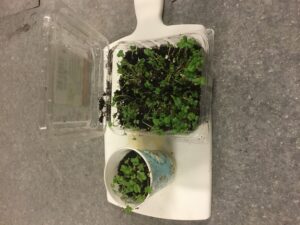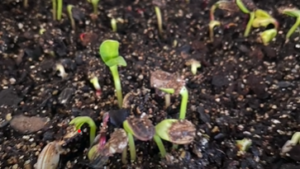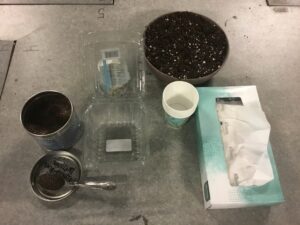Growing Microgreens in the Ability Garden
go.ncsu.edu/readext?924200
en Español / em Português
El inglés es el idioma de control de esta página. En la medida en que haya algún conflicto entre la traducción al inglés y la traducción, el inglés prevalece.
Al hacer clic en el enlace de traducción se activa un servicio de traducción gratuito para convertir la página al español. Al igual que con cualquier traducción por Internet, la conversión no es sensible al contexto y puede que no traduzca el texto en su significado original. NC State Extension no garantiza la exactitud del texto traducido. Por favor, tenga en cuenta que algunas aplicaciones y/o servicios pueden no funcionar como se espera cuando se traducen.
Português
Inglês é o idioma de controle desta página. Na medida que haja algum conflito entre o texto original em Inglês e a tradução, o Inglês prevalece.
Ao clicar no link de tradução, um serviço gratuito de tradução será ativado para converter a página para o Português. Como em qualquer tradução pela internet, a conversão não é sensivel ao contexto e pode não ocorrer a tradução para o significado orginal. O serviço de Extensão da Carolina do Norte (NC State Extension) não garante a exatidão do texto traduzido. Por favor, observe que algumas funções ou serviços podem não funcionar como esperado após a tradução.
English
English is the controlling language of this page. To the extent there is any conflict between the English text and the translation, English controls.
Clicking on the translation link activates a free translation service to convert the page to Spanish. As with any Internet translation, the conversion is not context-sensitive and may not translate the text to its original meaning. NC State Extension does not guarantee the accuracy of the translated text. Please note that some applications and/or services may not function as expected when translated.
Collapse ▲As a Public Health student when it was time to find an internship, I jumped at the chance to work at The Ability Garden. Unbeknownst to me, to teach therapeutic horticulture and nature-based curriculums, I had to know a thing or two about gardening, not just admire the pretty flowers. While I exuded confidence, when it came down to teaching microgreens, I was lost. I have seen the small green things on top of salads and soups, but never truly inquired about them.
Microgreens are seeds that at a certain stage of development can be harvested, typically within two weeks of being planted. Microgreens can be grown from a wide variety of seeds, including arugula, broccoli, kale, radish, and sunflower. Each type of microgreen has a unique flavor profile and nutritional content, and did you know there are over 100 different types? They are packed with nutrients and flavor, making them an excellent addition to any dish. Microgreens are easy to grow, and they can be grown indoors or outdoors.
To grow microgreens, start by filling a tray or container with a good quality seed-starting mix. Sprinkle the seeds evenly over the soil and cover them with a thin layer of soil. Water the seeds gently, being careful not to disturb them. Place the tray in a warm, bright location, and keep the soil moist but not waterlogged, covering them with a plastic lid helps retain the moisture. Within a few days, the seeds will germinate, and within a week or two, you will have a tray full of fresh microgreens to pick off and eat! Harvest with sharp scissors, many microgreens are “cut and come again” so you can harvest multiple salad toppings over several weeks. For the most success read instructions on every packet as some require unique needs. Planting seeds and watching them grow is an ideal therapeutic gardening activity too. Not only can it create a sense of accomplishment and boost self-esteem, but it has been proven to reduce stress and improve mood.
My own experience with microgreens has been incredibly positive. I love the taste and the convenience of them. I was surprised at how easy they are to grow. I started with a sunflower radish mix and within 10 days, I had a steady supply of fresh greens. I now love experimenting with different combinations and recipes and feel confident sharing my knowledge. Overall, microgreens are a fantastic addition to any home garden, and I would highly recommend them to anyone looking for a quick and easy way to add some fresh, healthy greens to their diet.
Written by Gaines Carey, Ability Garden Public Health Intern

Microgreens growing in a clamshell and paper cup

Microgreen seedlings emerging from the soil

Supplies for microgreen clamshell activity



